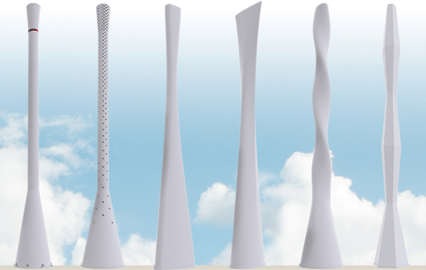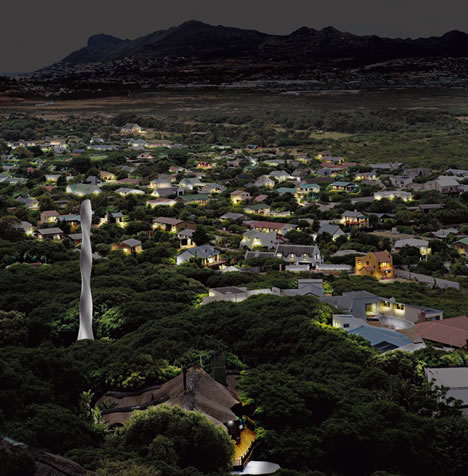
The cell phone towers are in today’s society a valuable service and you can pretty much find a tower anywhere you go. Yet they look like trash and people can go into legal battles if a company tries to put one nearby their homes.
Now Ericsson have introduced a more aesthetic pleasing cell phone tower called the "Ericsson Tower Tube". It is designed by the Scandinavian architect Thomas Sandell. The tower tube is, just like it name says, a simple and hollow flexible concrete tower that replaces current steel structures entirely.

But what’s so special about these tower tubes is that, according to Ericsson, they've decreased the ecology footprint of the towers and decreased carbon emissions from tower materials with 20%. Ericsson has managed to do all this with a less cost than the ordinary steel structures that you normally see these days.

Press Release:
Ericsson (NASDAQ: ERIC) today unveils an innovative radio base station site concept that is not only better for the environment but more cost-efficient to adopt and run, and more attractive to look at.
The modern design, from renowned Scandinavian architect Thomas Sandell, is a completely new approach to site architecture - the 5m-diameter, 40m-high flexible concrete tower encapsulates all radio base station equipment, including the antennas.
The aesthetics of the site concept, named the Ericsson Tower Tube, have been further enhanced by the choice of construction materials. The flexible concrete tower can be colored and branded to the operator's specific needs to either blend in with its surroundings or become an attractive landmark for the local community.
And the concrete itself has a lower environmental impact than traditional steel, producing 30 percent less CO2 emissions during production and transportation.
Diverging from standard design, the radio base station is placed at the top of the tower cutting the distance between it and the antenna. This gives capacity and coverage benefits for the cellular network and can together with the fact that no active cooling is needed reduce energy consumption up to 40 percent.
Furthermore, as the new design occupies less land, 60-75 percent less than conventional sites, site acquisition is easier. Being a self-contained structure, operators can also avoid the need for security fences and the cost of maintaining and patrolling them.
Ulf Ewaldsson, Vice President and Head of Product Area Radio, Ericsson, says: "The appearance of radio base station sites has not really been considered before. They have essentially been a steel tower and a container surrounded by a chain-link fence.
"With this new approach, we not only create a more attractive look for this essential piece of community architecture, but we have also developed a design that is better for the environment and more cost-efficient to run."

Recommended Comments
Join the conversation
You can post now and register later. If you have an account, sign in now to post with your account.